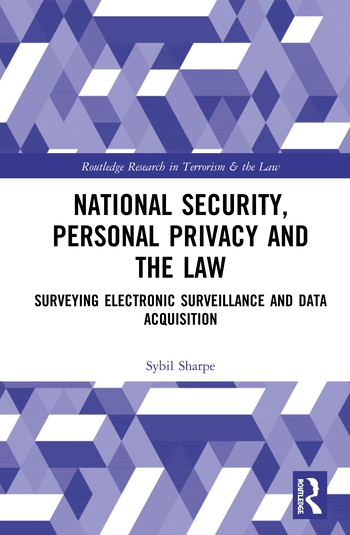Many incidents today are captured on video. That’s because there is an increasing number of surveillance devices, cellphones and body cameras collecting information. There’s no denying that this video technology is extremely beneficial to organizations that need to solve a crime, identify a suspect or disprove a liability claim. However, with so much evidence available, the process of collecting, managing and sharing video during an investigation has become very expensive and time-consuming.
The Problem with the Old Way of Managing Evidence
Sometimes, operators might spend hours, or even days, compiling evidence from various sources and building cases. In the process, they’re usually juggling many different applications. Even once they have all the information they need, investigators are often required to convert video to specific formats so it can be reviewed. In some cases where video must be shared, the clip includes juveniles or other bystanders. This means operators must also find ways to redact the video to protect privacy, which often involves paying external sources to blur identities.
The process then continues with burning copies of video onto DVDs or USB sticks and either expediting or hand-delivering the digital evidence to necessary parties. Should a DVD get damaged or end up in the wrong hands, the organization could face massive penalties according to new privacy legislation such as the European Union’s General Data Protection Regulation (GDPR). Considering all of this, a single case can cost an organization a significant amount of time and money.
The pains of this process are getting worse. Think of cities and transit authorities that must handle hundreds or thousands of cases in a month. Or, consider other organizations such as retailers, stadiums or hospitals that must keep the evidence for years to protect themselves against liability claims. Storing all this video and keeping hard copies inevitably becomes difficult to maintain.
A New Take on Digital Evidence Management
So, how can an organization effectively manage digital evidence today? How can businesses adhere to protecting privacy, securely keep video for longer periods of time, and even reduce operational costs while managing requests? By using a DEMS.
Short for “digital evidence management system,” DEMS is a new application that is uniquely designed to help organizations manage both the storage and distribution of digital evidence from a variety of sources. A DEMS also makes it easier for businesses to protect data that must remain classified.
Working with a DEMS Boosts Productivity and Security
Using a DEMS makes compiling, sharing and securing video evidence easier. There’s no more burning copies of video to DVDs or USB sticks or delivering the evidence to recipients in physical form.
Everything related to the case such as media, documents and incident data is safely stored in a single application. Should an operator need to retrieve evidence weeks or months later, they can use keywords or any other information such as case numbers to quickly find what they are looking for.
Built-in redaction capabilities help the operator mask any identities that need to be protected. Then, when it’s time to share the video and case details with internal departments such as human resources or risk management, or even external agencies such as local law enforcement or the state attorney’s office, operators can easily add recipients along with their email address. Each authorized individual will receive a secure link to the files, which allows them to access the evidence and other relevant information. Videos can be played directly from a web browser, without any software to install, and without needing to find a workstation with a disk drive.
To keep data secure, each recipient is also assigned permissions. This means that depending on the user’s role, the operator can grant them the ability to view, edit and download case data, or perhaps limit their capabilities to only viewing the video. Every action taken by each user within the application is logged, so that chain of custody is always ensured.
All of this happens without the operator ever needing to leave their desk. That means not only does the organization save countless man hours that can be dedicated to other tasks, but they are also speeding up the investigative process to close cases faster. There is also no more need to buy and hold onto external storage devices, which could get lost or damaged. And since all long-term archives are conveniently and safely stored in the evidence management system, the organization can also free up storage space and reduce their own hardware expenses. A DEMS can truly help an organization boost its team’s productivity while saving costs.
Key Considerations When Shopping for a DEMS
Seeing as this technology is new, organizations must properly evaluate their options. While looking around for a new digital evidence management system, here are a few key considerations that will help:
- Built to manage video evidence – It’s important to choose an application that has been specifically tailored to manage video evidence. Video is data-heavy and difficult to store, which a true DEMS is designed to help organizations manage.
- Permission-based sharing – Sharing sensitive video must be strictly controlled. After all, an organization’s reputation can be on the line if video ends up in the wrong hands. Choosing a solution that offers customized user permissions and enforces authentication to the application helps to ensure the video stays secure and that the organization is adhering to regulations.
- Integration with other applications – Selecting a DEMS that can interface with other applications which are used by security and risk teams such as an incident management system ensures operators won’t have to manually enter information twice. It also helps them compile evidence from other sources such as interview room, surveillance or body-wearable camera systems.
- Flexibility of storage requirements – As industry standards and data privacy laws evolve, organizations must be able to adapt. Choosing a solution that allows an organization to define retention periods for certain types of incidents can help save time and ensure policy compliance. Once these requirements are programmed, the system will automatically keep the video for the specified amount of time, giving operators one less thing to think about.
- Data privacy and cybersecurity – Organizations must also ensure the solution leverages the latest encryption standards to maintain the privacy and integrity of data within their DEMS platform. This will help safeguard data against malicious actors. Also, working with a vendor that dedicates security staff to administrate and review the architecture and design requirements can be advantageous to any organization. The vendor’s team can help make sure that the solution meets the highest standards of security and will continue to protect an organization from evolving threats.
Moving Towards Digital Evidence Management
As the amount of data being collected continues to grow, managing the data will become more challenging. Whether an organization is looking to close cases faster, improve the process of managing investigations, or simply reduce manual work, a DEMS can help teams focus on objectives. It’s an easier, more flexible and secure means to collect, manage and share evidence from different sources. One that will continue gaining interest across industries as more businesses experience the benefits of a DEMS first hand.









